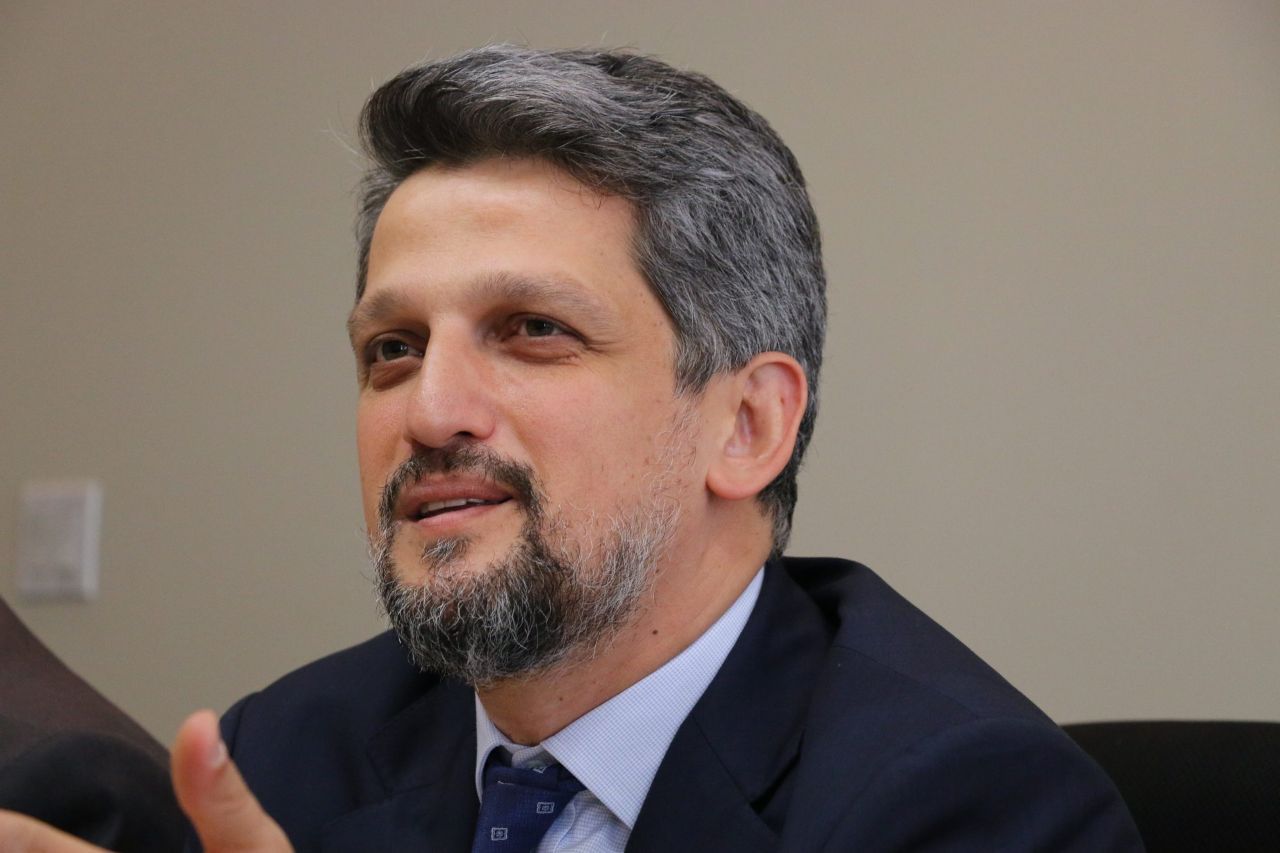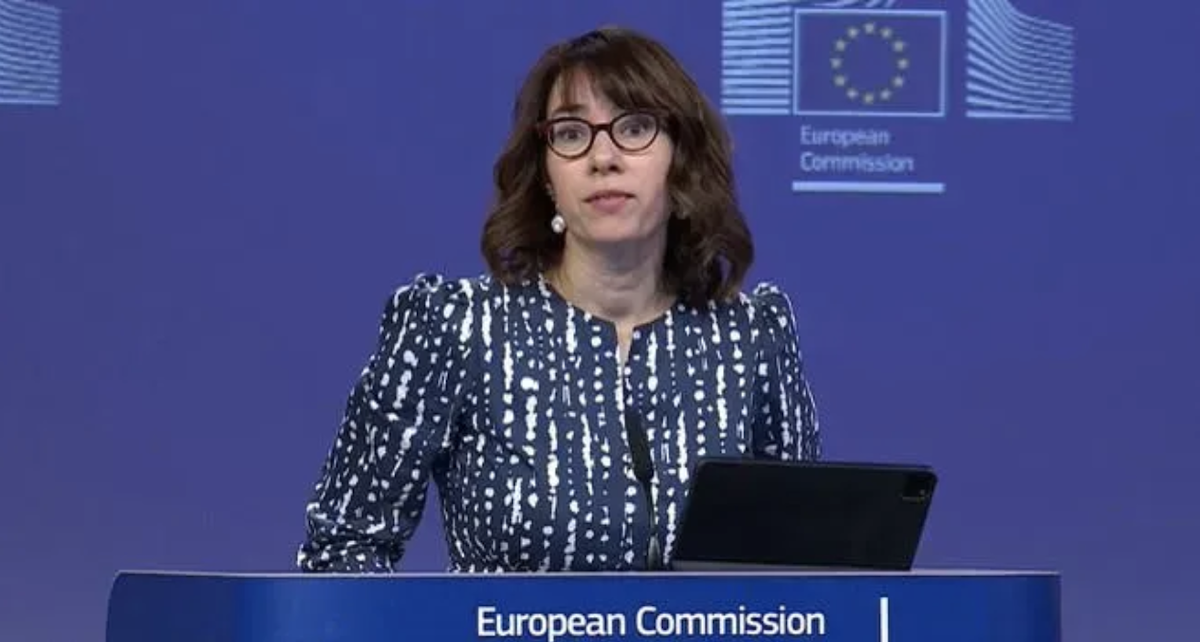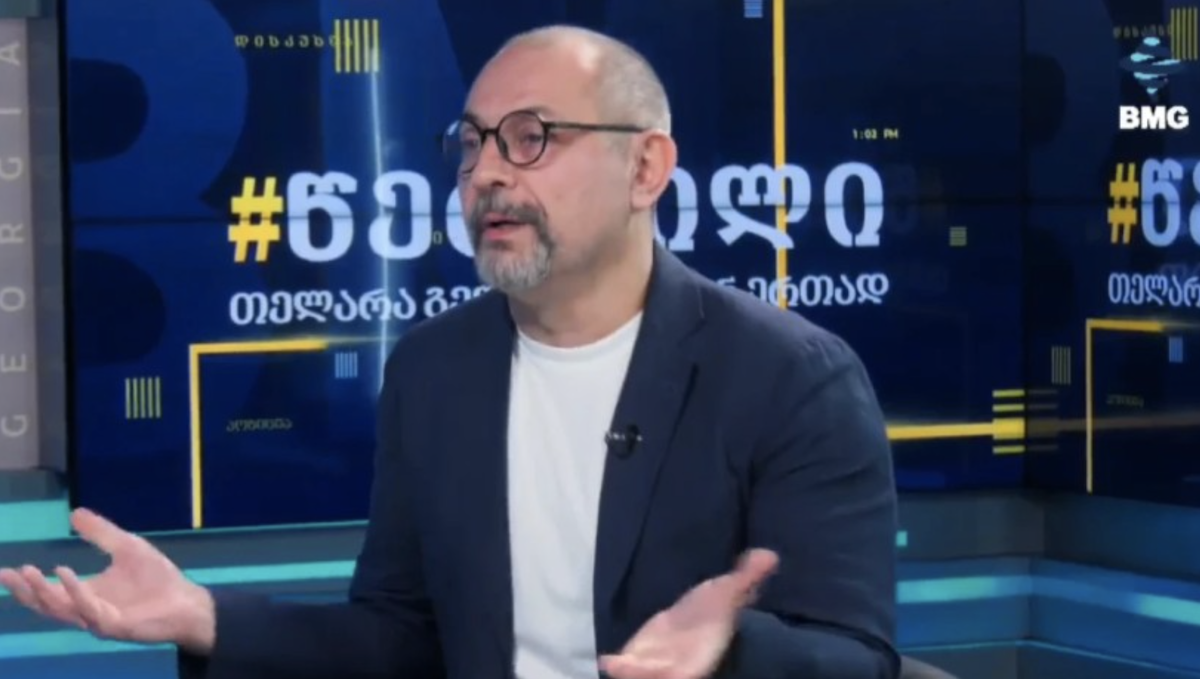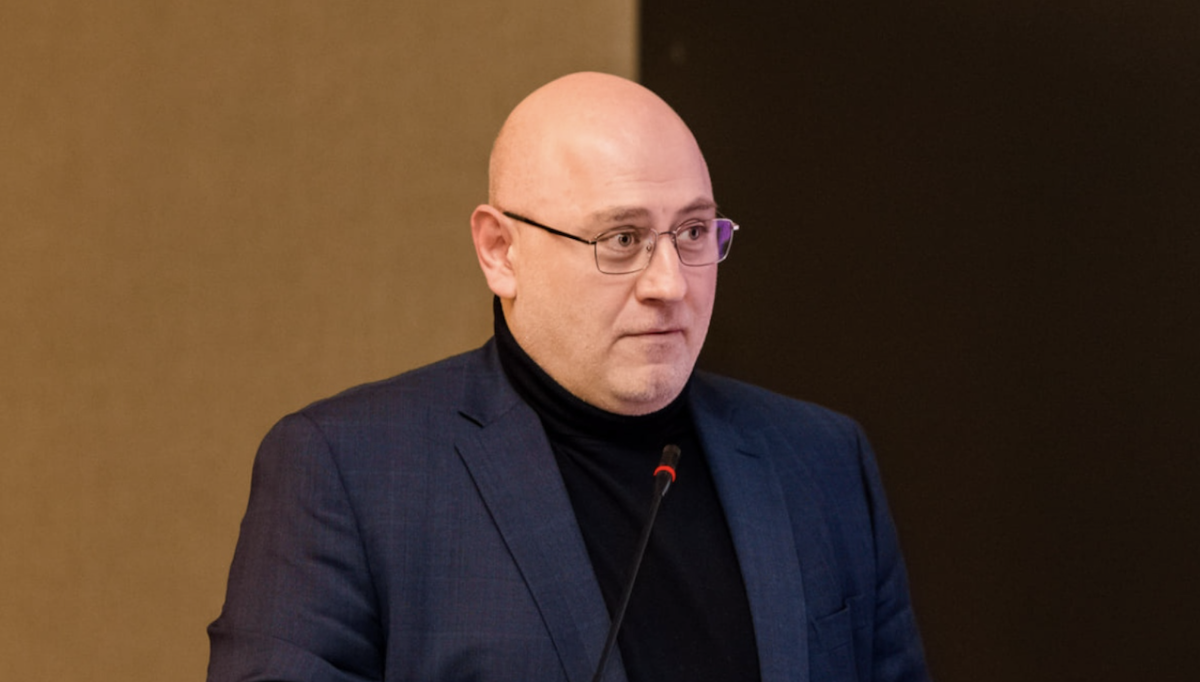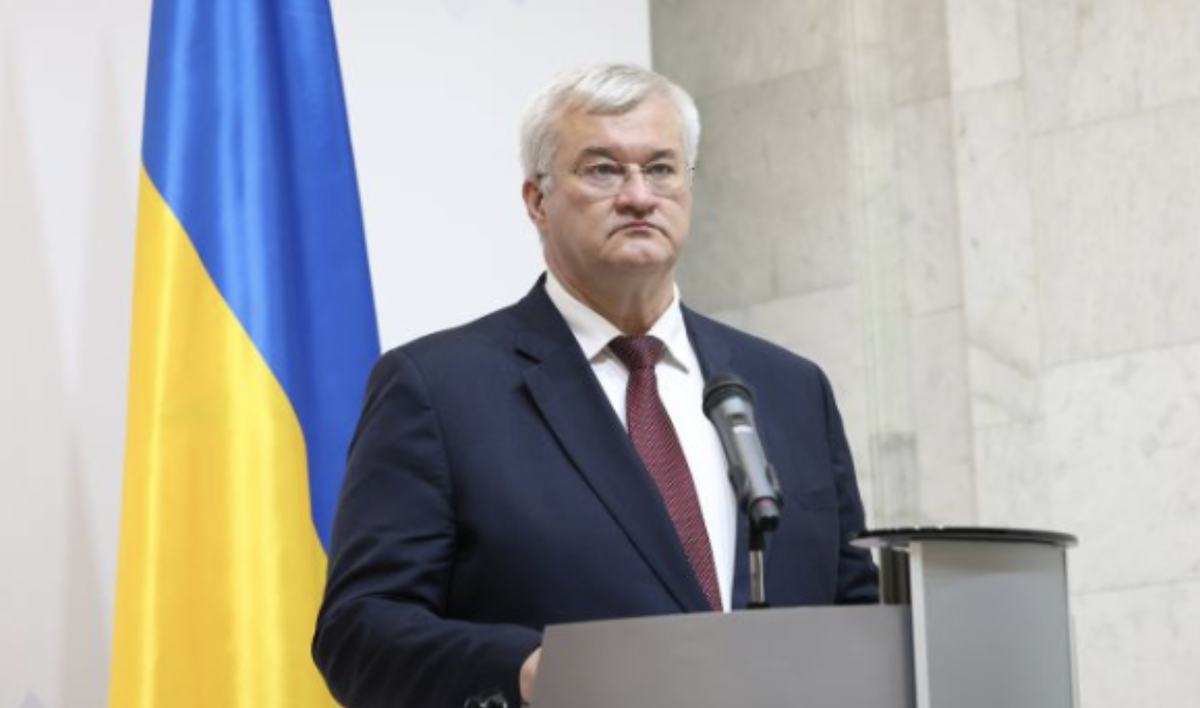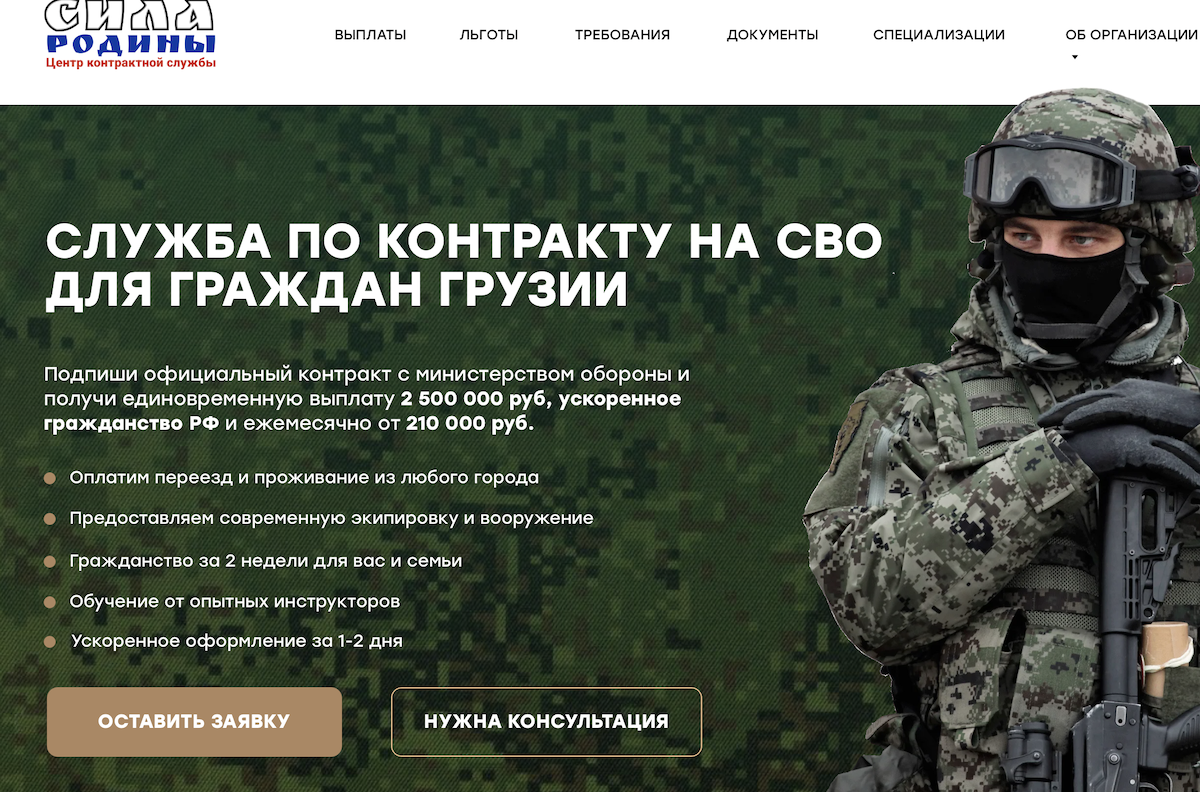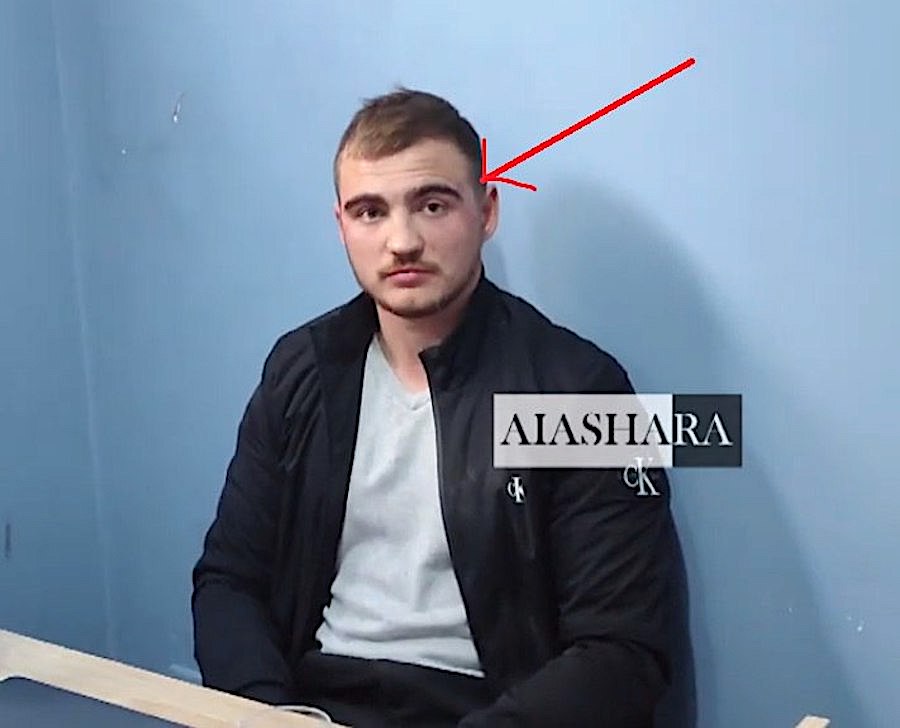Azerbaijani downed drones on display in Yerevan
Journalists in Yerevan were shown Azerbaijani unmanned aerial vehicles (UAVs) which had been shot down by Armenia during the recent skirmishes on the Armenia-Azerbaijan border.
During the four days of active military activity the Armenian military shot down 14 drones. 10 of which were combat drones, 1 general drone, and three reconnaissance drones. All the UAVs were of Israeli manufacture.
The skirmishes between the two countries began on 12 July, with the use of artillery and UAVs. This escalation in violence is considered to be the most serious since the 1990s, when the Nagorno-Karabakh war started. From 12 July to 16 July there were at least 17 casualties. The Azerbaijani side reports 13 deaths, and the Armenian side reports four. A relative lull in activity has settled since 17 July, which has been stable thus far.
On 21 July the press secretary of the Ministry of Defence of Armenia, Shushan Stepanyan, asserted that the situation at the border is more or less peaceful, adding:
“The Azerbaijani Armed Forces fired from sniper rifles, trying to target our servicemen. The Azerbaijani Armed Forces were warned about the consequences by appropriate means of communication”.
All of the details about the situation have come from Armenia.
● Who provoked the escalation on the Armenia-Azerbaijan border and why? Is Russia involved?
● Armenia-Azerbaijan border calmer on 4th day of outbreak of fighting
Exhibition of unmanned aerial vehicles
Not only were fragments of destroyed reconnaissance and combat UAVs on display at the exhibition, but also entire drones.
According to the Ministry of Defence of Armenia, during the recent skirmishes on the Armenia-Azerbaijan border, drones manufactured in Israel of the types Orbiter 3, Orbiter 2, SkyStriker, and Harop were shot down or captured.
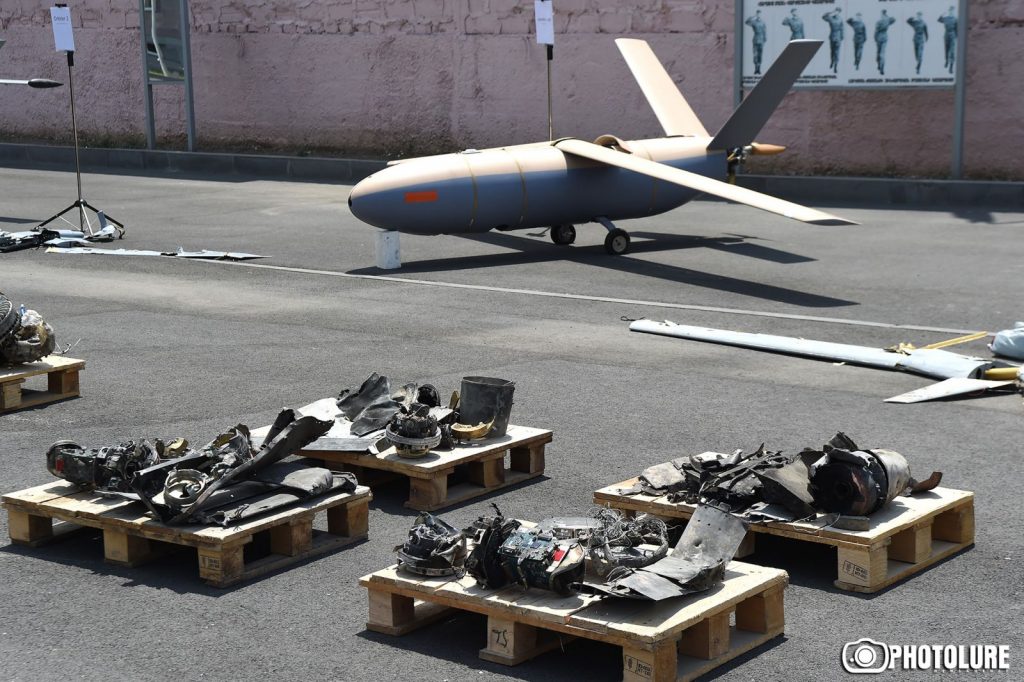
The Armenian army has stated that the recent fighting on the border of Armenia discredits the myth of the invincibility of Israeli drones.
“UAVs produced in Armenia deserve special attention, since they have proven that they are in no way worse than their Israeli counterparts. This has been demonstrated by the number of losses inflicted on the Azerbaijani army during the recent fighting”, stated Major-General Daniel Balayan.
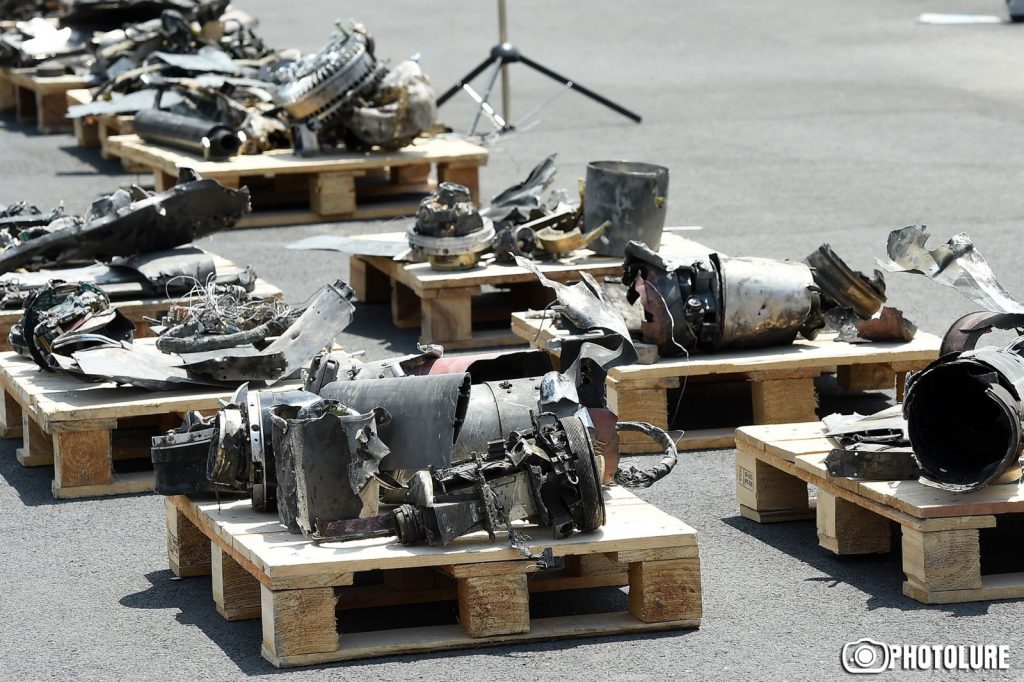
According to the calculations of Armenian experts, the Azerbaijanis suffered a loss of 150-200 million dollars in UAVs alone.
The Deputy Commander of the Air Defence Forces of Armenia, Garik Movsisyan, has stated once again that the Azerbaijani forces did not so much as even graze a single Armenian unmanned aerial vehicle.
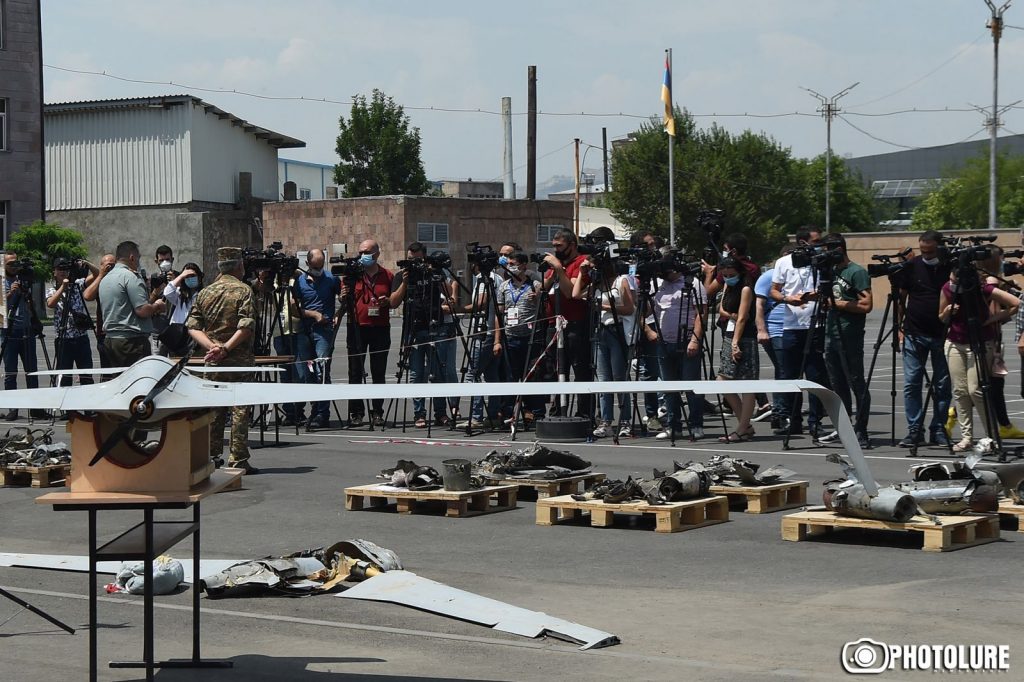
In his words, after the Four-Day war along the line of contact between the Armenian and Azerbaijani forces in Karabakh in April 2016, the Armenian Armed Forces made some changes, preparing, in particular, anti-aircraft capabilities to neutralise the threat of unmanned combatants.
Unexhibited models
The fragments of the reconnaissance model Hermes 900 were not exhibited. The Ministry of Defence has stated that it was neutralised during the fighting on 14 July.
The absence of the model was explained by Major-General Daniel Balayan as being due to the UAV having been shot down from a great height, making collection of the fragments very difficult.
The combat model SkyStriker was not exhibited either. The army explained that it had not delivered its payload and needed to be defused.
The condition of the wounded
According to the press secretary of the Ministry of Defence of Armenia, Shushan Stepanyan, one of the servicemen, who had been wounded during the fighting at the Armenia-Azerbaijan border, was in critical condition. The other wounded soldiers are in good condition.
36 people were wounded in all.
«20 of them received immediate medical care, while the remaining 16 returned to their positions immediately, as their wounds were superficial. Of the 20 wounded, 10 are still being treated».
Armenia excludes Turkey from participating in peace talks
The Minister of Foreign Affairs of Armenia, Zohrab Mnatsakanyan, gave an interview to the TV channel France24, stating that “Turkey would have no role” in peace talks with Azerbaijan, continuing:
«The peace talks concern Armenia, Nagorno-Karabakh, and Azerbaijan. We will continue working diligently and constructively with Azerbaijan to find a joint resolution. We must work to strengthen the ceasefire. We must hear a strong condemnation of threats of force and the use of force from Azerbaijan».
The head of the Ministry of Foreign Affairs also commented on Baku’s threat to attack the Armenian nuclear power plant, stating:
«This is a clear display of their lack of responsibility. It’s a threat to the whole region, really even to their own people. I find it very alarming, and it shows a lack of common sense. I think that it is very important for common sense to prevail in Baku».
To the question of whether a meeting between the leaders of Armenia and Azerbaijan could play a role in easing the tensions between the two countries, Zohrab Mnatsakanyan answered,
«Meetings between the leaders will be part of the talks… However, those meeting must be handled delicately… The Ministers of Foreign Affairs have been preparing this task for their leaders… A meeting of the leaders will only happen when we have a good foundation for such a meeting, one that will lead to progress in the talks».












